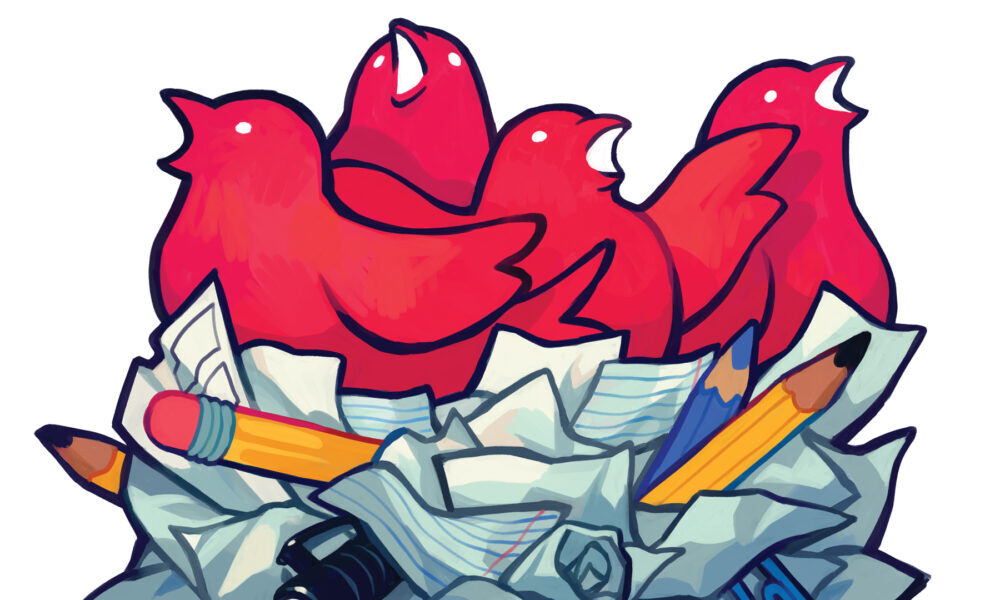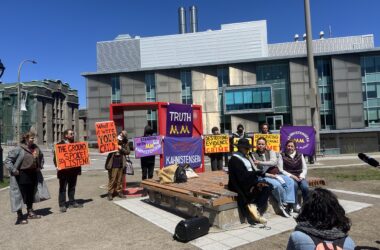About to begin a new chapter of its history under a new name, The Tribune delves into the paper’s history and explains the inner workings of the writing, editing, and publishing process.
What is The Tribune?
The Tribune was founded in 1981 as a student-run newspaper that became editorially independent in 2011, when the Société de Publication de la Tribune (SPT) was formed, separating the publication from the Students’ Society of McGill University (SSMU). It has seven written sections—News, Opinion, Arts and Entertainment, Features, Student Life, Sports, and Science and Technology—and publishes roughly 25 articles per week. The Tribune currently has 29 paid employees, including Section Editors, Design Editors, a Copy Editor, a Social Media Editor, a Creative Director, Managing Editors, and the Editor-in-Chief (EIC). Each semester, The Tribune also hires Staff Writers and Creatives, which are unpaid volunteer positions.
The Board of Directors (BoD) governs the SPT and is responsible for hiring the EIC, approving the annual budget, and convening Annual General Meetings in the winter semester, among other things. Excluding those in the School of Continuing Studies and those at Macdonald campus, all undergraduate students are automatically members of the SPT and may attend any open BoD meetings.
Editions of the paper are distributed in 65 locations across campus, the most popular being the front entrance of the McLennan Library.
Before the COVID-19 pandemic, The Tribune distributed 5,000 physical copies on campus per week, while online readership boasted an average of 70,000 views. In 2023, circulation was lowered to 2,000, and its online readership dipped, with an average of 60,000 hits per week.
Twice a year at the end of each semester, The Tribune releases a special, themed issue. These are typically 24 pages—compared to the usual 16—and may include additional creative content, as well as a highlights section with shout-outs to some of the most significant pieces published throughout the semester.
What does a typical week look like for writers and editors?
The process begins on Monday, Tuesday, and Wednesday evenings, when editors, staff, and contributors meet in suite 110 of the SSMU University Centre or over Zoom to discuss and pitch ideas for the upcoming issue. By mid-week, editors submit photo, illustration, and multimedia requests to the design team, who is responsible for ensuring that pieces have accompanying photographs or illustrations.
The Editorial Board meets every Friday evening to discuss various pitches presented by the Opinion Editors. After voting on which topic to editorialize on, editors engage in an open discussion for about two hours, which Opinion Editors then use to write an editorial that is published on Tuesday in the upcoming issue.
Articles by Staff Writers and contributors are due Friday night and undergo three rounds of edits over the weekend. On Sunday night and Monday morning, two editors from outside sections review the articles, a process called “set one.” The Managing Editor of each section then addresses set one edits, before the piece gets to the Copy Editor and EIC by mid-morning on Monday. By the end of the night, Managing Editors and the EIC have done a final read-through of all of the articles, articles are scheduled to publish on the website, and the design team has created the final layout for the physical newspaper. A PDF is then sent to the publisher, Hebdo Litho, to be printed and distributed to newsstands across campus on Tuesday morning.
Where does The Tribune get its funding?
The Tribune is funded entirely by student fees via the SSMU and Post-Graduate Students’ Society (PGSS). Every semester, undergraduate students pay $4 in non-opt-outable fees to support The Tribune, and this year, the sum paid by post-graduate students was increased from $0.87 to $1.50 per semester.
Today, the business team rarely receives requests for print advertisements in The Tribune In past decades, however, a substantial portion of the newspaper’s revenue was generated by ad placements. It was around 2010—when readership moved largely online—that ads began disappearing from the pages of the Tribune.








